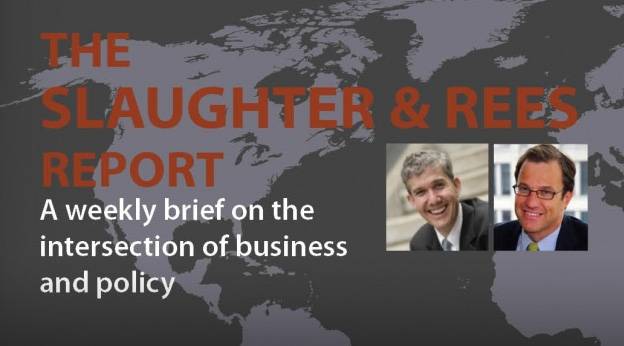Is This What Great Nations Do?
Slaughter & Rees say "skilled immigrants" bolster the U.S. workforce.

Slaughter & Rees say "skilled immigrants" bolster the U.S. workforce.
America’s latest jobs report was again lamentable. Over half of the jobs created were in the low-productivity, low-wage industries of temporary help services, retail trade, and food and drinking establishments. Average hourly earnings increased by one cent. Over 21 million Americans remain unemployed or underemployed. While any job creation is better than no job creation, what America sorely needs are millions of high-productivity, high-wage jobs connected to the global economy.
The U.S. Congress is currently considering legislation that would catalyze precisely this sort of job creation. This legislation isn’t focused on tax rates or government spending. Instead, it’s simply focused on admitting more workers into the U.S. economy. Not just any kind of workers: the special kind called “skilled immigrants.” In a new report, Matt Slaughter and co-author Gordon Hanson document the dynamic contributions talented immigrants have long made to the U.S. economy—and point out that there could be even more such contributions if U.S. law expanded the number of talented immigrants admitted into the United States.
For generations, highly talented immigrants in science and engineering have been a catalyst for innovation, job creation, and rising standards of living in America. Immigration has played a vital role in helping American companies—young and old, small and large, U.S.-based and foreign-based alike—meet their growing demand for talent, which spurs job creation and raises incomes for American workers and their families. Talented immigrants do not take slices of a fixed pie away from native-born workers. They make the pie bigger, to the benefit of all Americans.
Today, foreign-born individuals make up 20 percent of science, technology, engineering, and math (STEM) workers with bachelor’s degrees and 40 percent of those with advanced degrees. Among all U.S. workers with both a STEM doctorate and in a STEM occupation, 60 percent are immigrants. In the key STEM fields of computer science, computer programming, and software development, over 50 percent of U.S. workers with a master’s degree are immigrants.
Talented immigrants to the United States also have a track record of entrepreneurship. One quarter of U.S. high-technology firms established since 1995 have had at least one foreign-born founder. These new companies employ 450,000 people and generate more than $50 billion in sales. Immigrants or their children founded 40 percent of Fortune 500 companies, including firms behind seven of the 10 most valuable global brands.
Despite the fragility of the U.S. economy overall, America’s demand for H-1B visas is today very strong. It is so strong that within one week after U.S. Citizenship and Immigration Services began accepting new H-1B petitions on April 1, it announced that approximately 124,000 petitions had already been filed – for just 85,000 slots. Any petitions received after close of business April 5 were rejected, and USCIS then allocated the fiscal 2014 H-1B visas via lottery. This most-recent H-1B visa lottery reprises the similar lotteries due to similarly strong demand in the pre-crisis years of 2007 and 2008.
Is this what great nations do? Accept via random chance only a fraction of the world’s brightest yearning to enter, and then turn away the rest? Surely America can do better. Whether that happens is now in the hands of 535 elected representatives in Washington, D.C. There is reason to hope. Cross your fingers.